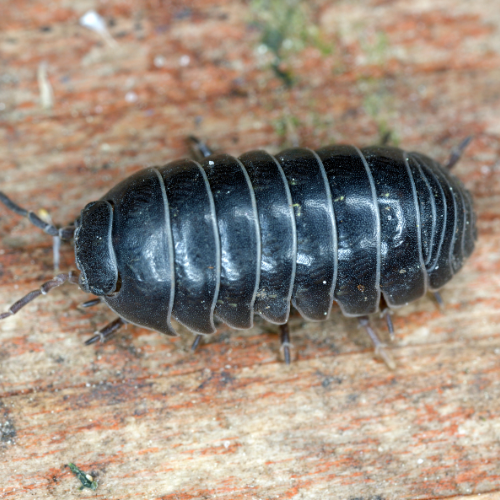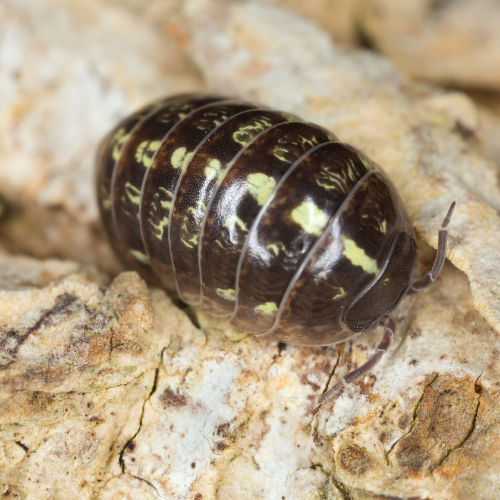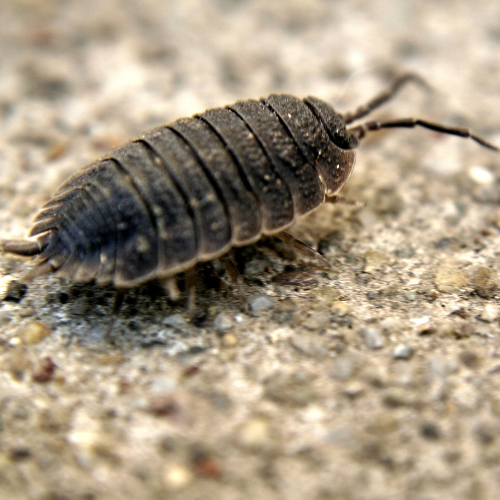Pillbugs
Introduction to
Pillbugs, also known as roly-polies or woodlice, are common arthropods often found in moist environments. Known for their ability to roll into a ball when threatened, pillbugs play an essential role in the decomposition of organic matter. This guide provides detailed information on how to recognize, understand, and manage pillbugs, including preventive measures and professional pest control solutions.
Recognition
Pillbugs are small, oval-shaped arthropods, typically measuring between 1/4 to 1/2 inch in length. They are characterized by their dark gray or brown segmented exoskeletons, which allow them to roll into a tight ball when disturbed. This defensive behavior is a key distinguishing feature from other similar-looking arthropods like sowbugs, which cannot roll up completely. Pillbugs have seven pairs of legs and two pairs of antennae, though only one pair is easily visible. They are often found in moist environments, such as under logs, rocks, and leaf litter.
Biology
Pillbugs belong to the order Isopoda and are terrestrial crustaceans, more closely related to shrimp and crabs than to insects. They undergo incomplete metamorphosis, developing from eggs to juveniles to adults without a pupal stage. Females carry their eggs in a brood pouch until they hatch, after which the young pillbugs resemble miniature adults. Pillbugs primarily feed on decaying organic matter, contributing to the decomposition process and nutrient recycling in the soil. They are beneficial in gardens as they help break down dead plant material.
Habits
Pillbugs are nocturnal and prefer dark, damp environments. They are commonly found under rocks, logs, mulch, and leaf litter in gardens and yards. Indoors, they are occasionally found in basements, crawl spaces, and bathrooms, where they seek out moisture. Pillbugs are detritivores, feeding on decaying plant material and organic matter. They do not bite, sting, or transmit diseases, making them harmless to humans and pets. However, their presence indoors can be an indication of excessive moisture, which may lead to other pest problems.
Prevention
Preventing pillbug infestations involves reducing moisture and eliminating hiding places. Use dehumidifiers in damp areas like basements and bathrooms to keep these spaces dry. Seal cracks and gaps around doors, windows, and foundations to prevent pillbugs from entering. Ensure that gutters and downspouts direct water away from the house to keep the foundation dry. Remove leaf litter, mulch, and other organic debris from around the home’s exterior to reduce outdoor harborage areas. Regularly inspect and maintain door and window screens to keep pillbugs out.
Professional
When pillbugs become a persistent problem, professional pest control services can offer effective solutions. STL Pest Control provides comprehensive inspections and tailored treatment plans to address pillbug infestations. Their methods include moisture control recommendations, sealing entry points, and targeted treatments to eliminate existing pillbugs. Professional services ensure that the infestation is managed efficiently and safely, reducing the inconvenience and potential distress caused by these pests.



Our Office









